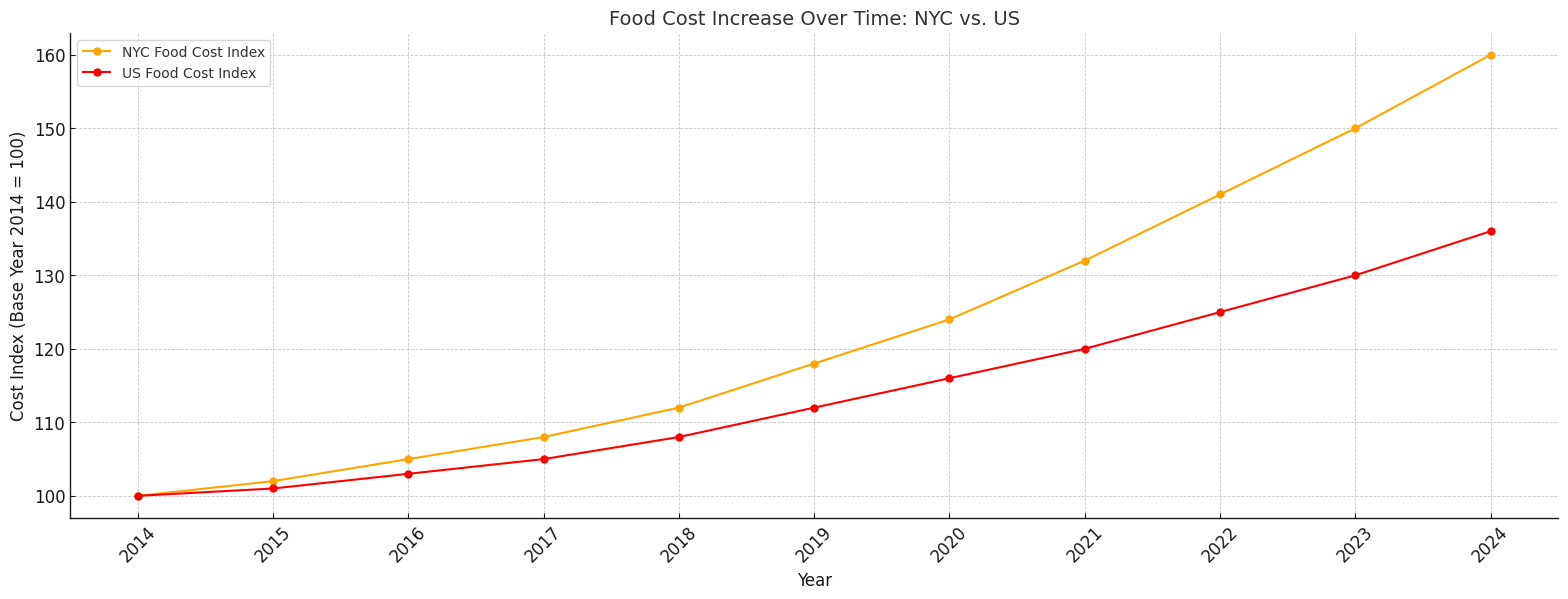Food Economy
Food costs in NYC vs. the Rest of the US

The New York City (NYC) food economy presents a striking contrast to the rest of the United States, driven by higher costs and pronounced inflation impacts. NYC's food prices have consistently outpaced national averages, reflecting the city's unique economic pressures. Over the past decade, food costs in NYC have risen by an estimated 30%, compared to a 20% increase nationwide.
In 2023, the annual inflation rate for food in NYC reached 6.2%, higher than the national average of 5.4%. This difference is due to several factors, including higher transportation and labor costs and the city's dependence on imported goods. The general cost of living in NYC further compounds these issues. Housing, utilities, and services in NYC are significantly more expensive, contributing to higher operational costs for businesses and, consequently, higher consumer prices.
A typical grocery basket in NYC costs approximately 25% more than the national average. For instance, a gallon of milk in NYC averages $4.50, compared to $3.50 nationally. These disparities extend to dining out, where restaurant prices in NYC can be 40% higher than in other major US cities. The cumulative effect is a substantial financial burden on NYC residents, deficient—and middle-income families who spend a significant proportion of their income on food.
